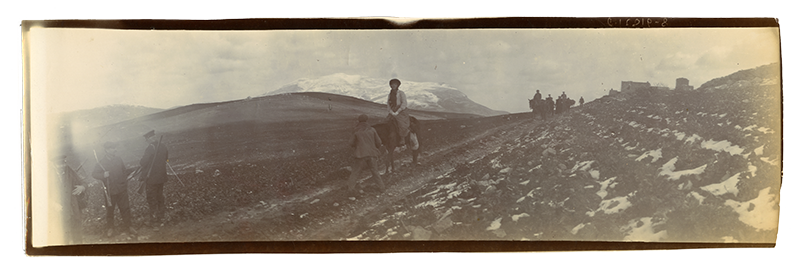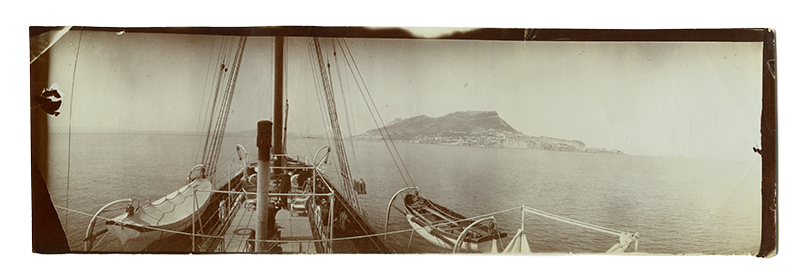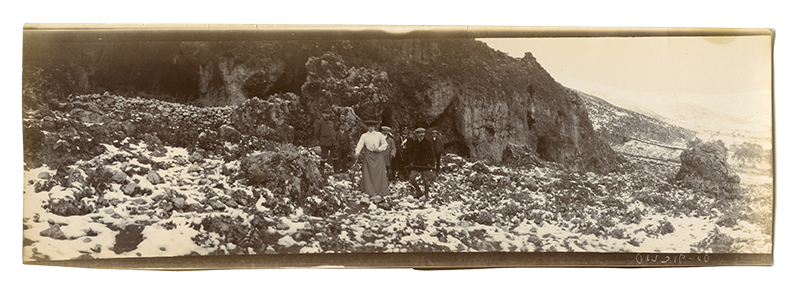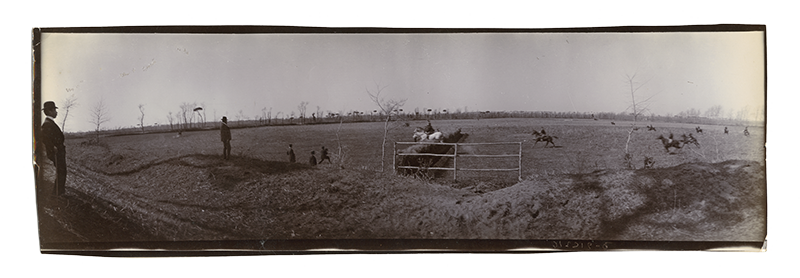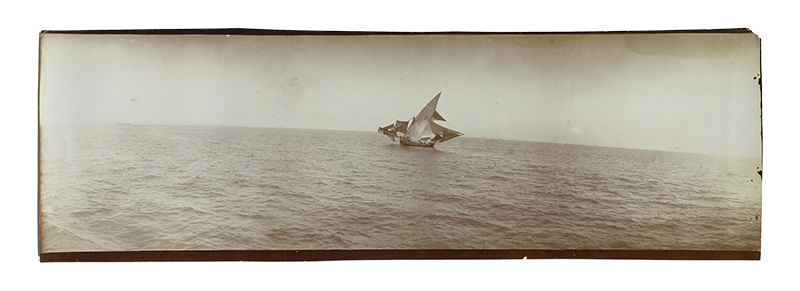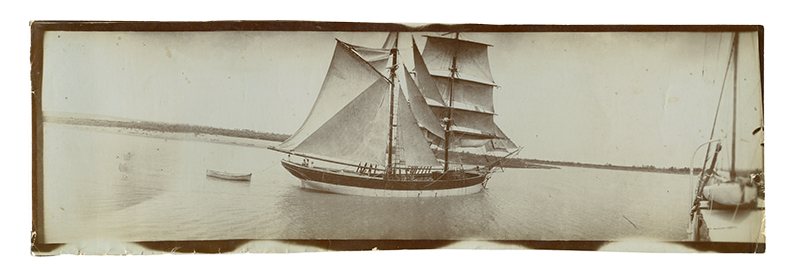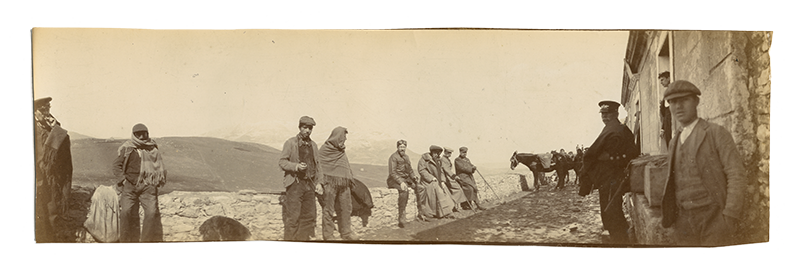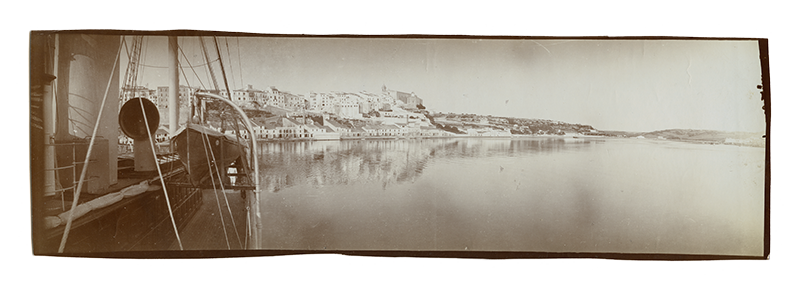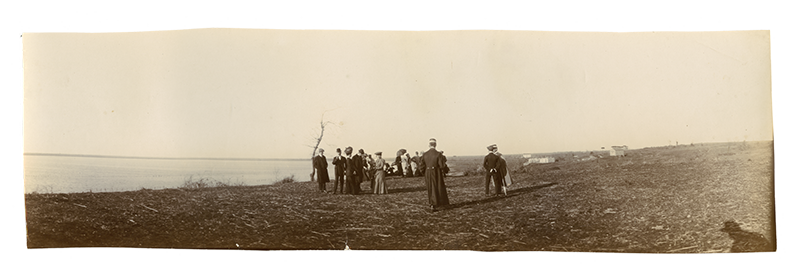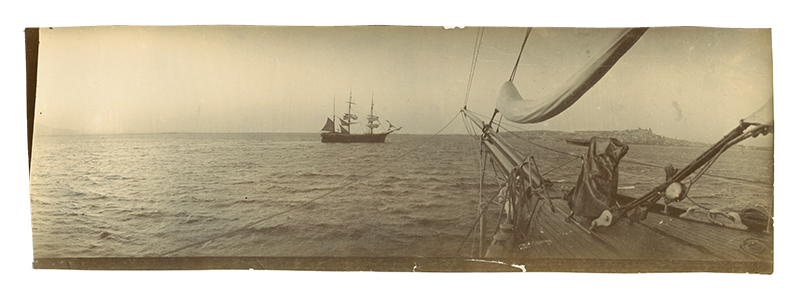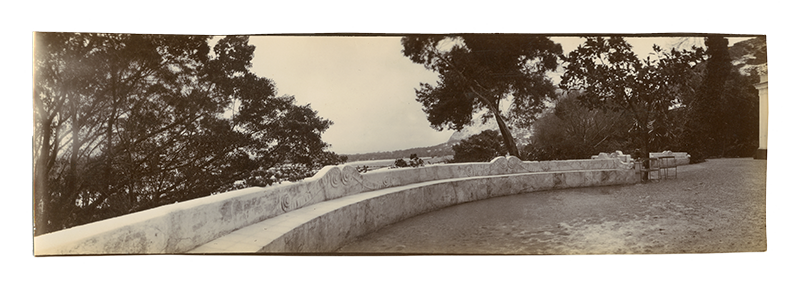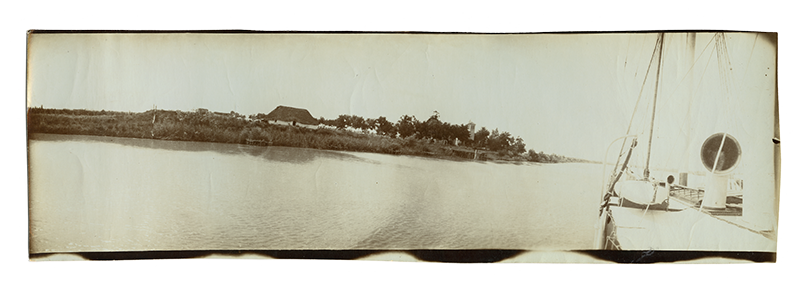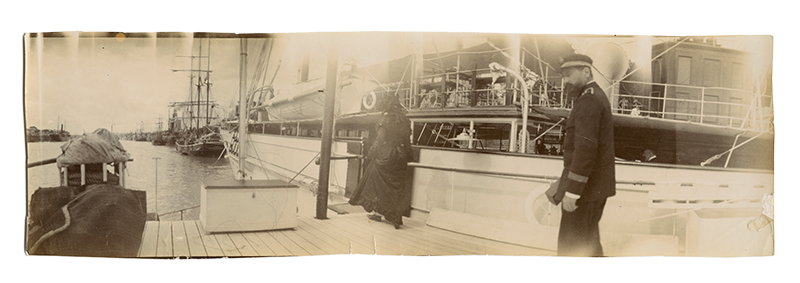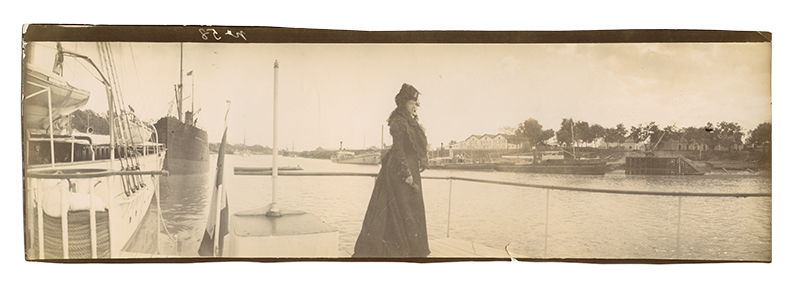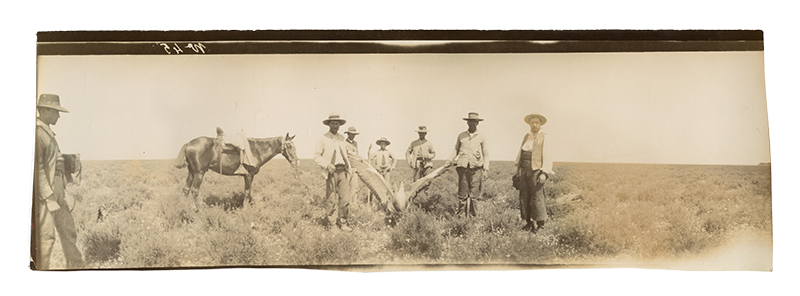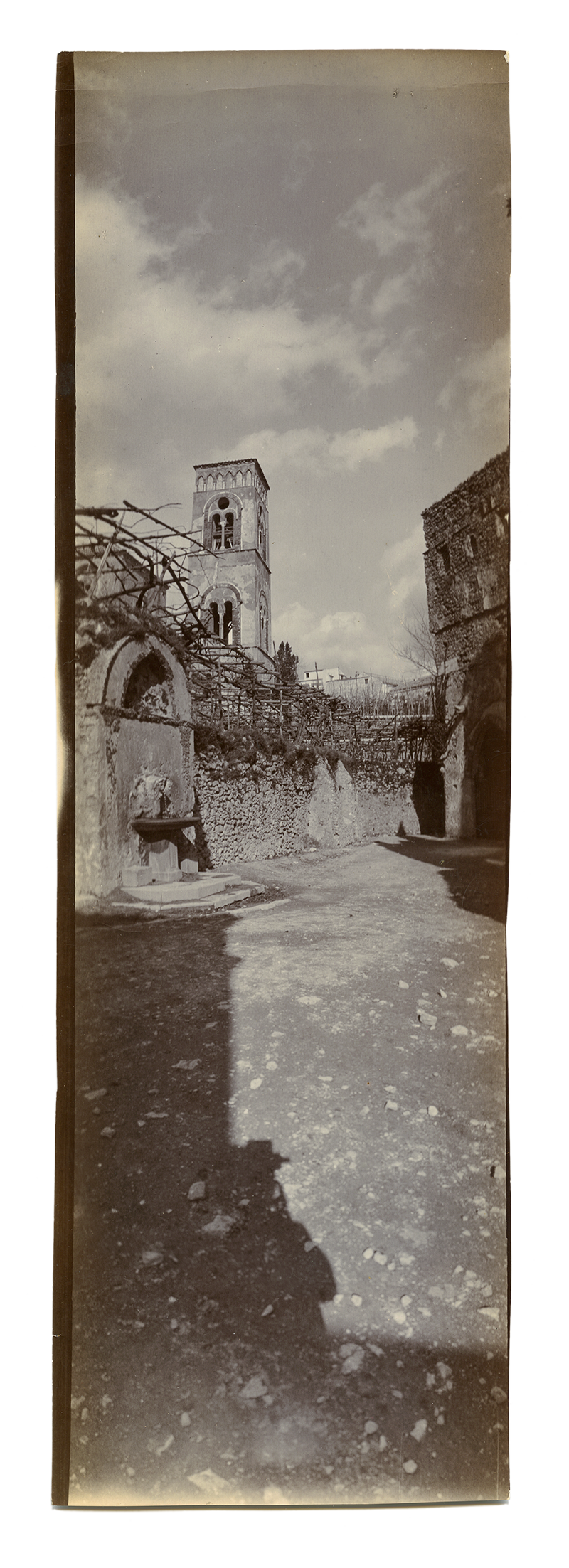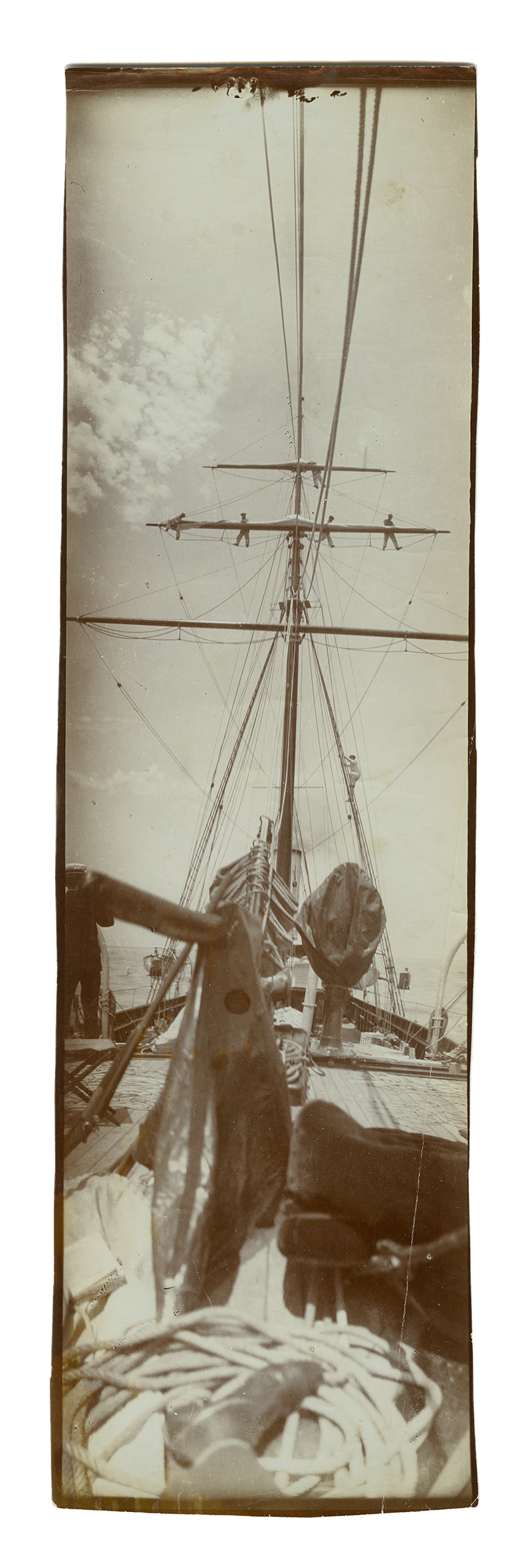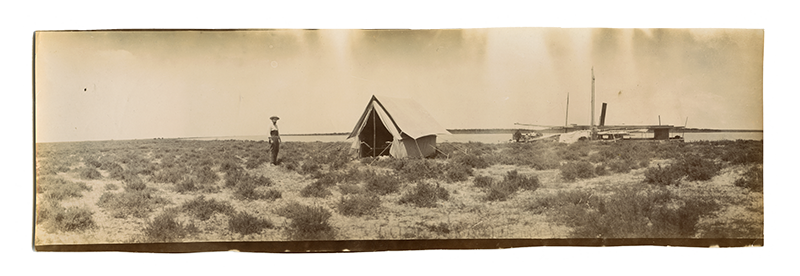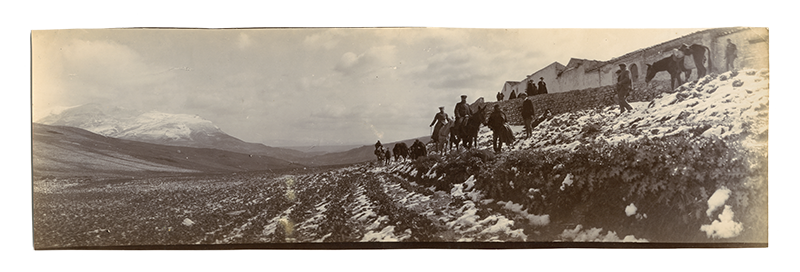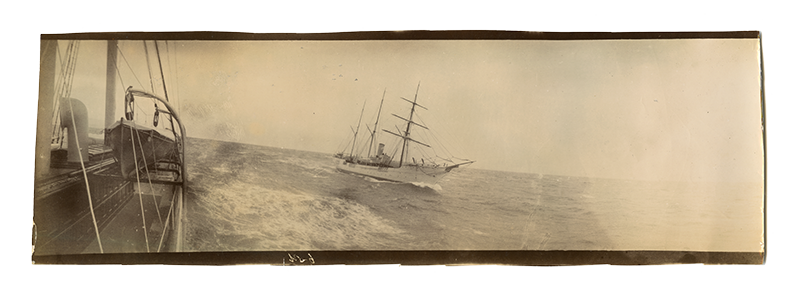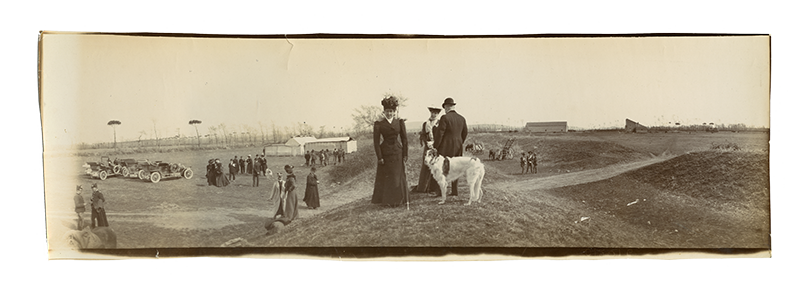Duc d’Orléans
27 citrate print (aristotype) 30 x 8 cm, circa 1905/1910 taken by Philippe Duc d'Orléans. Philippe Duc d'Orléans (Twickenham, 1869 – Palermo, 1926) is famous for returning to France in 1890, despite the exile laws that, since 1886, had kept the royal family at bay. Arrested as he turned up at the Paris recruiting office to comply with conscription (which explains his nickname of prince gamelle, "Mess tin prince"), he was condemned to two years in gaol and expelled from French territory. The pretender to the French throne since his father's death in 1894, he lived most of his life in England. He married the archduchess Marie-Dorothée of Austria in 1896 and died childless in 1926. His dynastic rights were then conferred to his cousin Jean, Duc de Guise, Prince Henri d'Orléans's father. Well-travelled (India, Ethiopia, Arctic), a hunter, ornithologist and taxidermist, Philippe, Duc d'Orléans left several hundred photographic shots taken during his many sojourns in a variety of European countries. Several series show him taking part in the favourite pastimes of European aristocratic circles of the early twentieth century: horse-riding, hunting, water sports, picnics, motoring, near Palermo or near Seville, in the Guadalquivir delta or in Bulgaria, or on his second yacht, the Belgica. If some pictures were probably taken by various members of his entourage, friends or relatives – his sister Queen Amélie, wife of King Carlos of Portugal, being herself an amateur photographer, most of the prints appear to be the work of the Duc d'Orléans himself. In these snapshots, taken with one of the small panoramic cameras by Kodak that appeared on the market from the years 1899-1900 onwards (probably the Kodak Panoram number 3 or 4) and that allow for angles of 110 to 140 degrees, he proved to be an unequalled amateur photographer. He manipulated the camera as a virtuoso, both horizontally and vertically, showing a sensitive sense of composition and construction of the picture in many successive planes, sometimes playing facetiously with the distortions resulting from the use of the wide angle lens.
